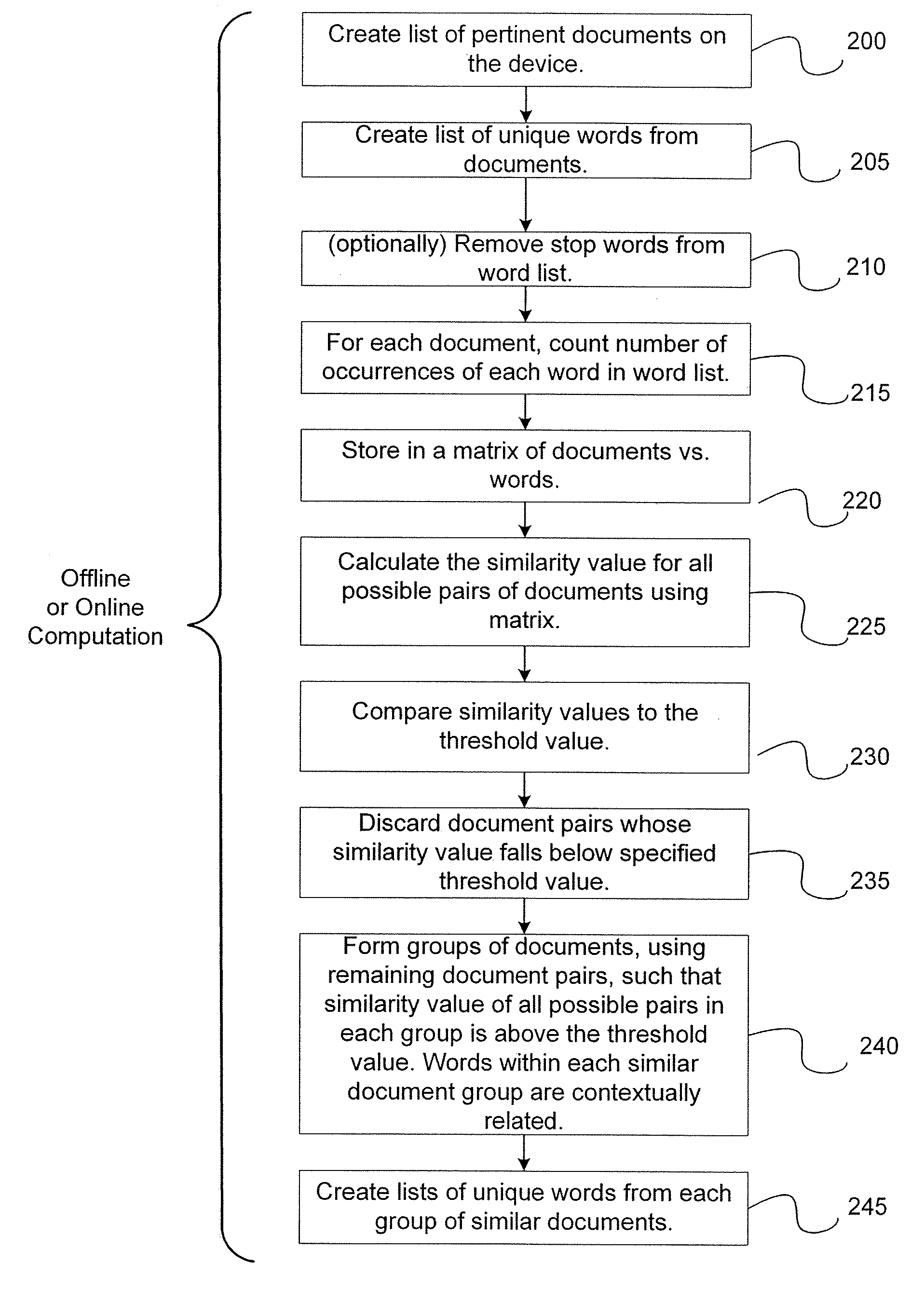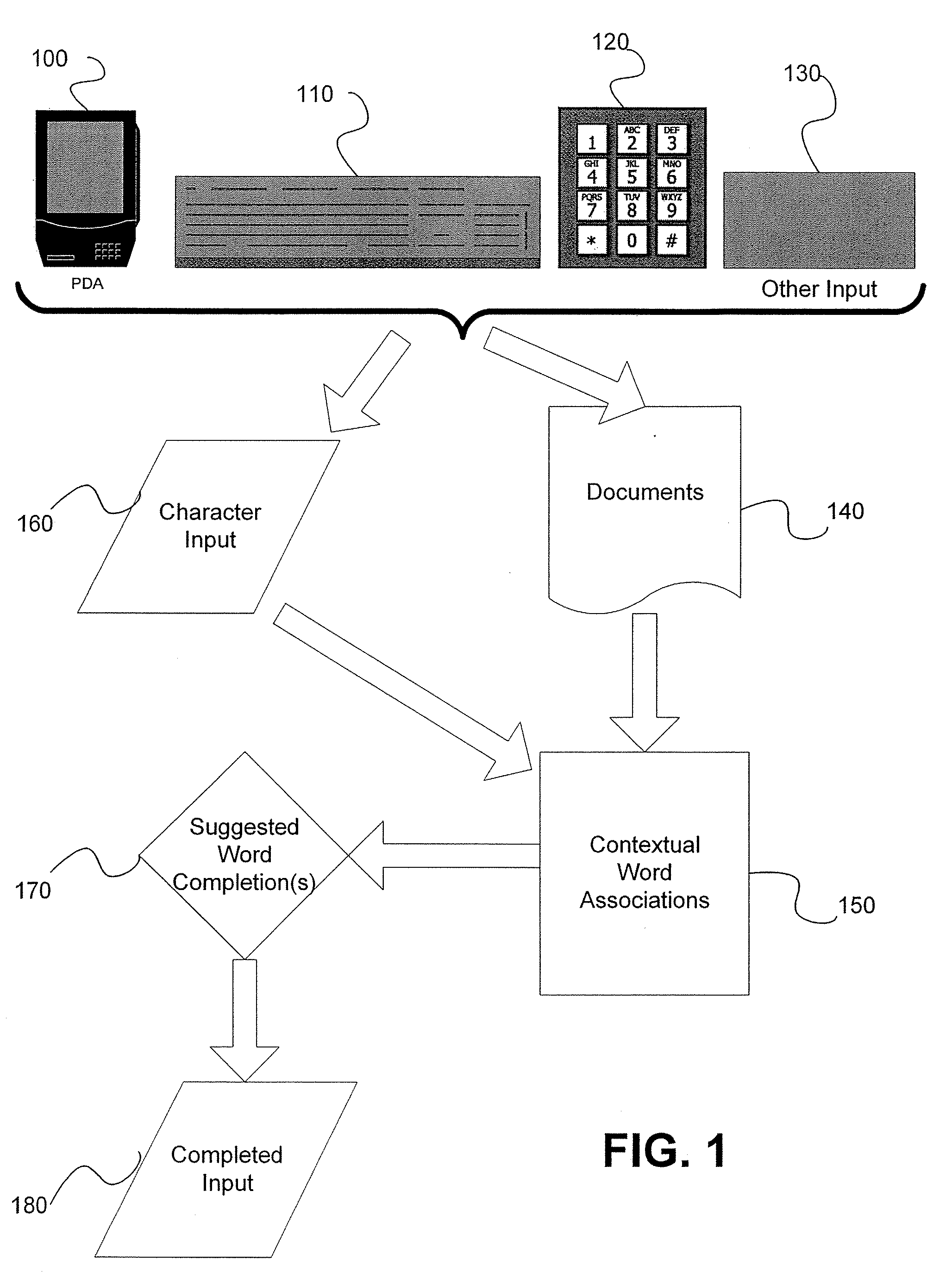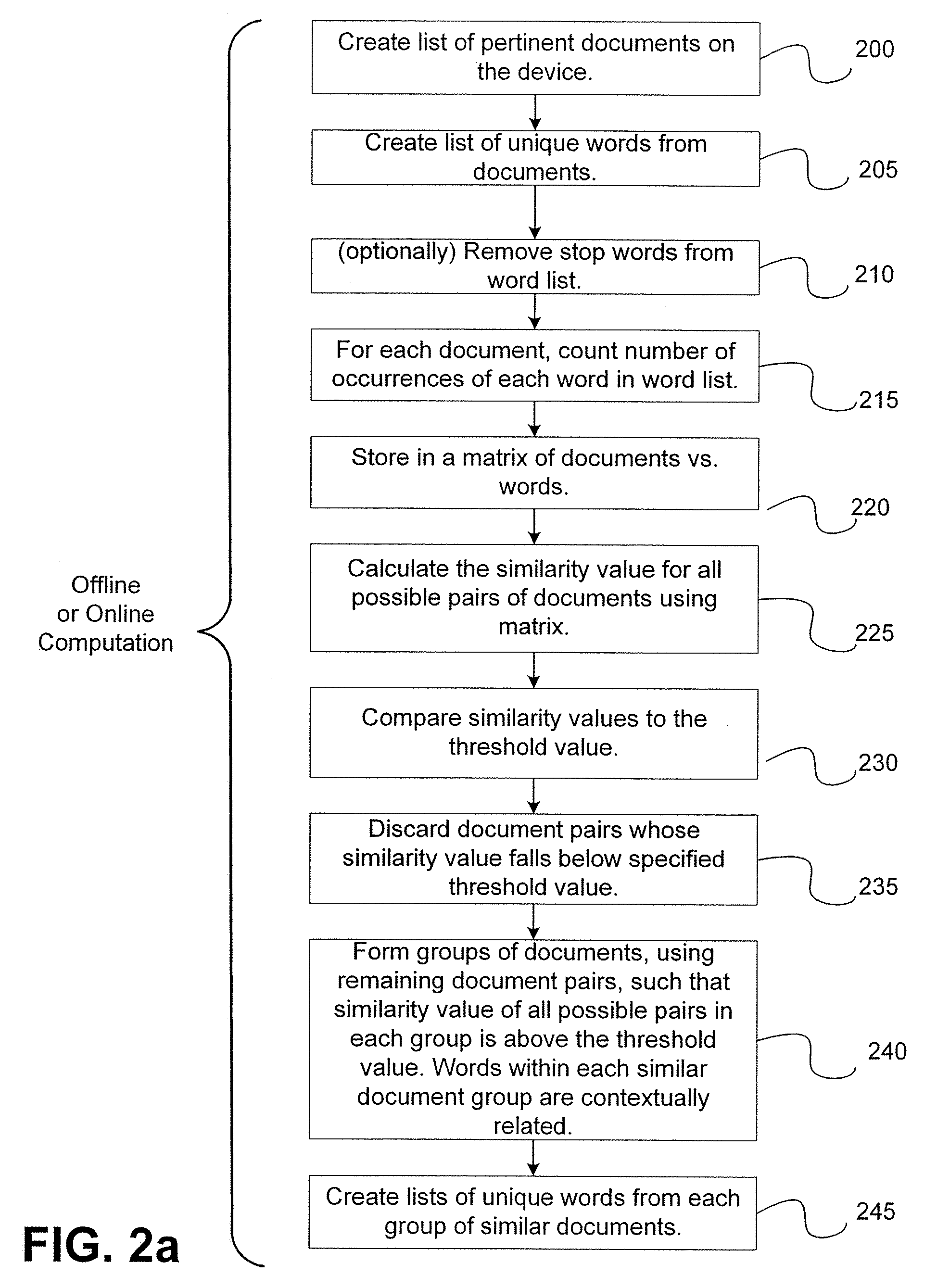Automatic dynamic contextual data entry completion system
a complete system and dynamic data technology, applied in the field of information processing, can solve the problems of inefficiency of separate word suggestion lists, lack of true context based systems, and annoyingness, and achieve the effect of improving
- Summary
- Abstract
- Description
- Claims
- Application Information
AI Technical Summary
Problems solved by technology
Method used
Image
Examples
example 1
[0065] In one simplified example implementation, a user types “finance” followed by the characters “su.” The system checks all the word lists for the word “finance.” It would find that it just occurs in word list #1 (602). Next, it checks all words in that list (or lists, if there is more than one where “finance” occurs) that begin with “su” and it finds the word “summary.” As a result, the system offers to complete the user's word with “summary.” The user can opt to accept that suggestion or not by the appropriate action, in this case pressing an appropriate key (e.g. the “Enter” key). Note, that as a result of the above processing, “sugar” is not on this list and thus it is judged not to be a contextually relevant suggestion.
example 2
[0066] In another simplified example implementation based upon FIG. 6, the user types “two spoons of” and then the characters “su.” Again, the system looks for the words “two” and “spoon” (the plural ending can be assumed to be stemmed in real time if stemming is used) on the word lists. Because, in this example, the word “of” is on the stop word list it is ignored. The system finds “two” in word lists 2 (604) and 3 (606) and finds “spoon” in word list 2 (604). As a result, it looks for words beginning with “su” in all common lists first, i.e. in this example, word list 2 (604). It finds “sugar” in word list 2 (604) and offers it as a suggestion to the user, for acceptance or rejection. In this case, although word list 3 (606) contains the word “summary” which could have been a possible suggestion, it was eliminated because “summary” is associated with “two” through word list 3 (606) but it is not associated with “spoon” on any list.
example 3
[0067] In a further simplified example implementation based upon FIG. 6, a user types in “one” followed by the characters “ch.” Now “one” occurs in word lists 2 (604) and 3 (606). There is no other information to find a common list or to eliminate any list containing “one” as was done with “summary” in the previous example. In this case, both lists are considered and searched for words starting with “ch.” There are two: “chili” in list 2 (604) and “chapter” in list 3 (606). Depending on the implementation, both suggestions are offered to the user for acceptance or rejection or the system can wait until the user types a third character. Note that, if the former occurs, optionally, the system can operate to ignore further character entry for that word or represent a selection based upon the next character entered. This can occur only once or interactively, the former allowing for entry of words not in any list without annoying prompts, the latter allowing for discerning among multiple...
PUM
 Login to View More
Login to View More Abstract
Description
Claims
Application Information
 Login to View More
Login to View More - R&D
- Intellectual Property
- Life Sciences
- Materials
- Tech Scout
- Unparalleled Data Quality
- Higher Quality Content
- 60% Fewer Hallucinations
Browse by: Latest US Patents, China's latest patents, Technical Efficacy Thesaurus, Application Domain, Technology Topic, Popular Technical Reports.
© 2025 PatSnap. All rights reserved.Legal|Privacy policy|Modern Slavery Act Transparency Statement|Sitemap|About US| Contact US: help@patsnap.com



